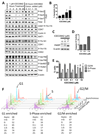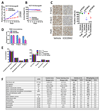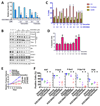ICEC0942, an Orally Bioavailable Selective Inhibitor of CDK7 for Cancer Treatment
- PMID: 29545334
- PMCID: PMC5985928
- DOI: 10.1158/1535-7163.MCT-16-0847
ICEC0942, an Orally Bioavailable Selective Inhibitor of CDK7 for Cancer Treatment
Abstract
Recent reports indicate that some cancer types are especially sensitive to transcription inhibition, suggesting that targeting the transcriptional machinery provides new approaches to cancer treatment. Cyclin-dependent kinase (CDK)7 is necessary for transcription, and acts by phosphorylating the C-terminal domain (CTD) of RNA polymerase II (PolII) to enable transcription initiation. CDK7 additionally regulates the activities of a number of transcription factors, including estrogen receptor (ER)-α. Here we describe a new, orally bioavailable CDK7 inhibitor, ICEC0942. It selectively inhibits CDK7, with an IC50 of 40 nmol/L; IC50 values for CDK1, CDK2, CDK5, and CDK9 were 45-, 15-, 230-, and 30-fold higher. In vitro studies show that a wide range of cancer types are sensitive to CDK7 inhibition with GI50 values ranging between 0.2 and 0.3 μmol/L. In xenografts of both breast and colorectal cancers, the drug has substantial antitumor effects. In addition, combination therapy with tamoxifen showed complete growth arrest of ER-positive tumor xenografts. Our findings reveal that CDK7 inhibition provides a new approach, especially for ER-positive breast cancer and identify ICEC0942 as a prototype drug with potential utility as a single agent or in combination with hormone therapies for breast cancer. ICEC0942 may also be effective in other cancers that display characteristics of transcription factor addiction, such as acute leukaemia and small-cell lung cancer. Mol Cancer Ther; 17(6); 1156-66. ©2018 AACR.
©2018 American Association for Cancer Research.
Conflict of interest statement
Figures





Similar articles
-
The development of a selective cyclin-dependent kinase inhibitor that shows antitumor activity.Cancer Res. 2009 Aug 1;69(15):6208-15. doi: 10.1158/0008-5472.CAN-09-0301. Epub 2009 Jul 28. Cancer Res. 2009. PMID: 19638587 Free PMC article.
-
BAY 1000394, a novel cyclin-dependent kinase inhibitor, with potent antitumor activity in mono- and in combination treatment upon oral application.Mol Cancer Ther. 2012 Oct;11(10):2265-73. doi: 10.1158/1535-7163.MCT-12-0286. Epub 2012 Jul 19. Mol Cancer Ther. 2012. PMID: 22821149
-
CDK7 inhibitors as anticancer drugs.Cancer Metastasis Rev. 2020 Sep;39(3):805-823. doi: 10.1007/s10555-020-09885-8. Cancer Metastasis Rev. 2020. PMID: 32385714 Free PMC article. Review.
-
Discovery and Characterization of SY-1365, a Selective, Covalent Inhibitor of CDK7.Cancer Res. 2019 Jul 1;79(13):3479-3491. doi: 10.1158/0008-5472.CAN-19-0119. Epub 2019 May 7. Cancer Res. 2019. PMID: 31064851
-
Cyclin-dependent kinase 7 inhibitors in cancer therapy.Future Med Chem. 2020 May;12(9):813-833. doi: 10.4155/fmc-2019-0334. Epub 2020 Mar 25. Future Med Chem. 2020. PMID: 32208930 Review.
Cited by
-
Discovery of bivalent small molecule degraders of cyclin-dependent kinase 7 (CDK7).Eur J Med Chem. 2024 Oct 5;276:116613. doi: 10.1016/j.ejmech.2024.116613. Epub 2024 Jun 27. Eur J Med Chem. 2024. PMID: 39004018
-
Enhancer rewiring in tumors: an opportunity for therapeutic intervention.Oncogene. 2021 May;40(20):3475-3491. doi: 10.1038/s41388-021-01793-7. Epub 2021 May 1. Oncogene. 2021. PMID: 33934105 Review.
-
Transcriptional Silencing of MCL-1 Through Cyclin-Dependent Kinase Inhibition in Acute Myeloid Leukemia.Front Oncol. 2019 Dec 12;9:1205. doi: 10.3389/fonc.2019.01205. eCollection 2019. Front Oncol. 2019. PMID: 31921615 Free PMC article. Review.
-
Cyclin-Dependent Kinase Inhibitors and Their Therapeutic Potential in Colorectal Cancer Treatment.Front Pharmacol. 2021 Dec 21;12:757120. doi: 10.3389/fphar.2021.757120. eCollection 2021. Front Pharmacol. 2021. PMID: 35002699 Free PMC article. Review.
-
Identification of a 3,3-difluorinated tetrahydropyridinol compound as a novel antitumor agent for hepatocellular carcinoma acting via cell cycle arrest through disturbing CDK7-mediated phosphorylation of Cdc2.Invest New Drugs. 2020 Apr;38(2):287-298. doi: 10.1007/s10637-019-00792-6. Epub 2019 May 11. Invest New Drugs. 2020. PMID: 31076964
References
Publication types
MeSH terms
Substances
Grants and funding
LinkOut - more resources
Full Text Sources
Other Literature Sources
Molecular Biology Databases
Miscellaneous

